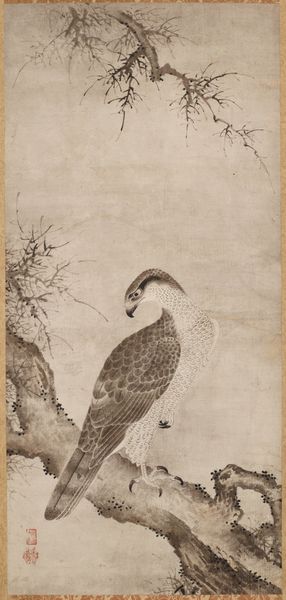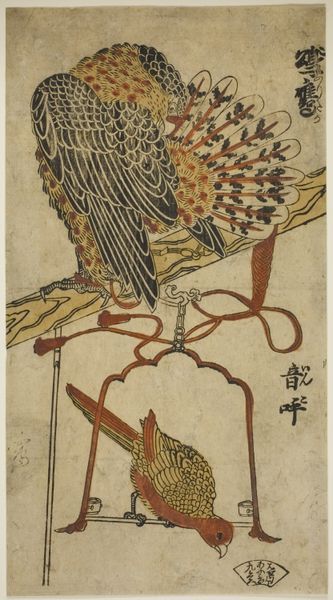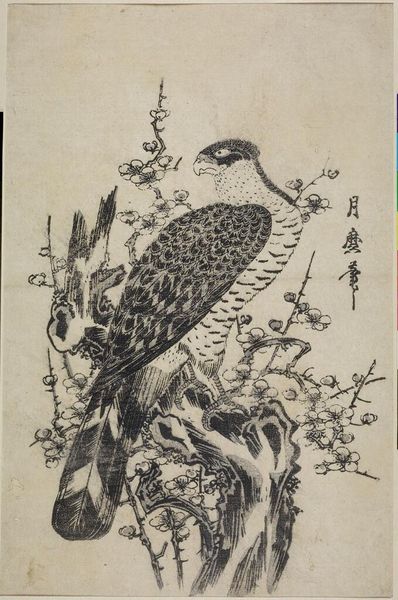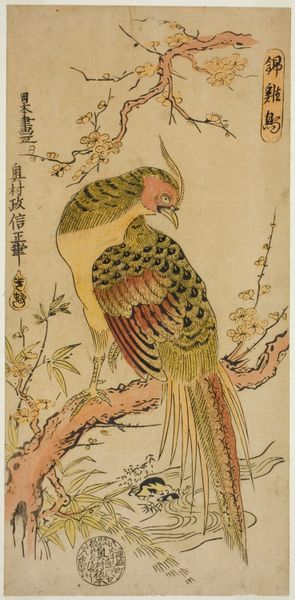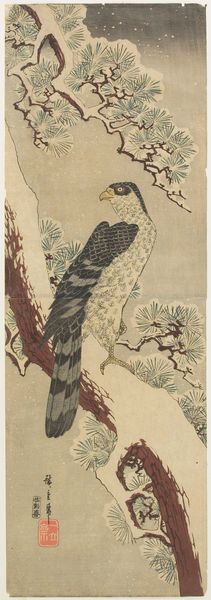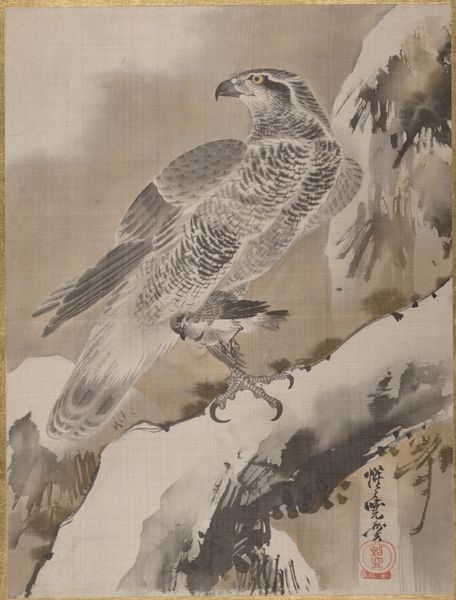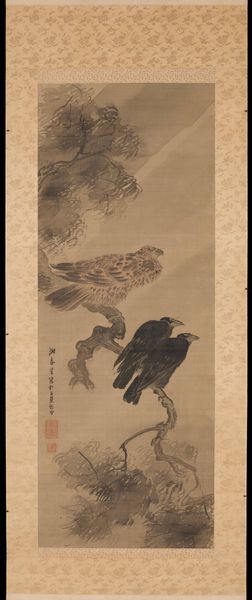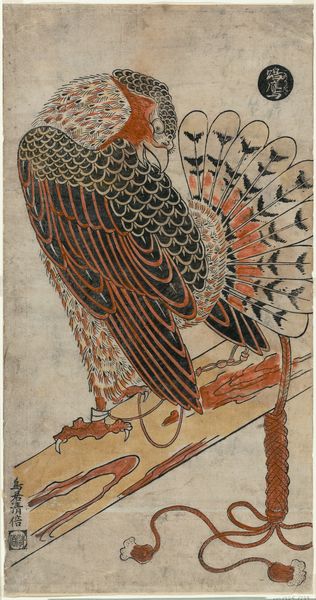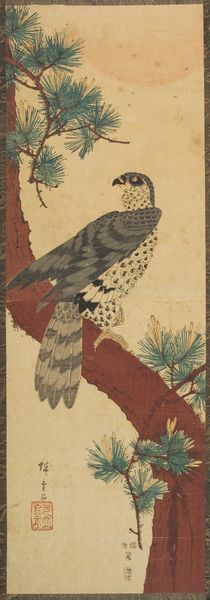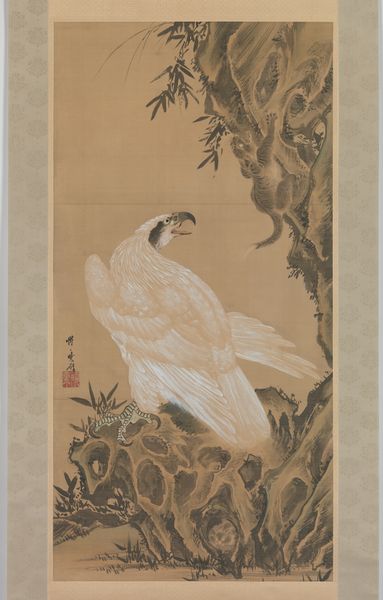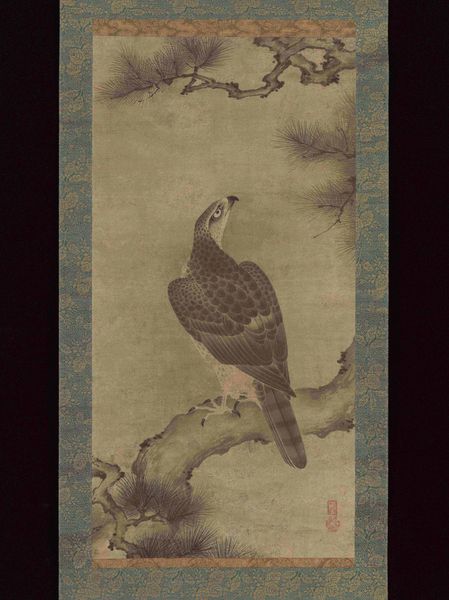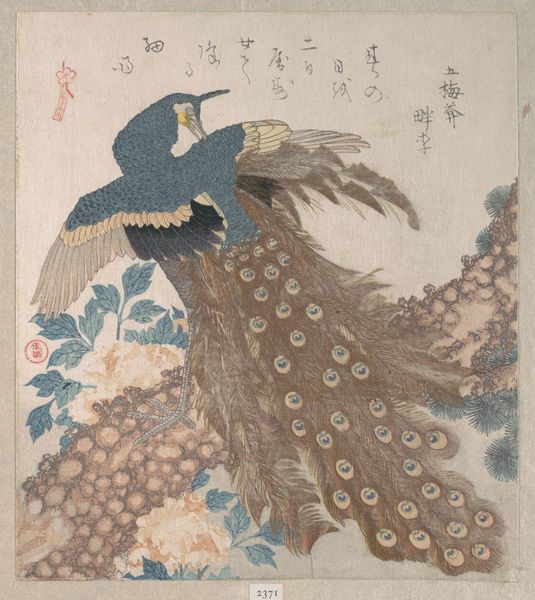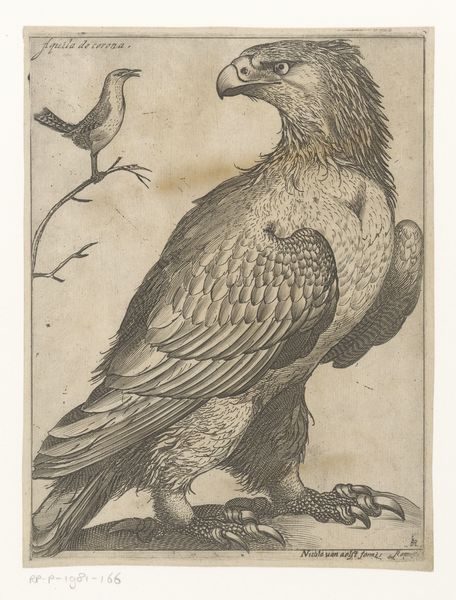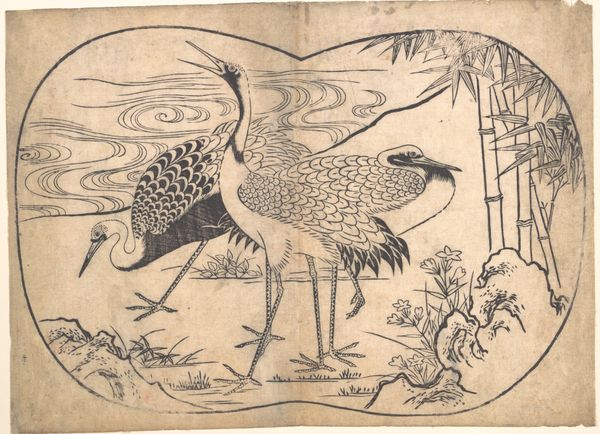
drawing, print, ink, woodblock-print
#
portrait
#
drawing
#
ink painting
# print
#
asian-art
#
landscape
#
etching
#
ukiyo-e
#
ink
#
woodblock-print
Dimensions: 31.2 × 14.7 cm (12 1/4 × 5 3/4 in.)
Copyright: Public Domain
Editor: Here we have Okumura Masanobu's "A Hawk on a Kiri Tree" from around 1720-1725. It's a woodblock print in ink. I'm struck by the contrast between the hawk's sharp, detailed feathers and the more simplified leaves of the tree. How do you approach a work like this? Curator: I immediately consider the socio-economic conditions that enabled the production and consumption of Ukiyo-e prints. Woodblock printing was a collaborative process, think about the roles of the artist, the carver, and the printer, each contributing their labor. Editor: So, it's less about individual genius and more about a network of skilled workers? Curator: Exactly! And we must remember the materials: the woodblocks themselves, the ink, the paper. Where did these come from? How were they processed? Who controlled access to them? This was commercial art and aimed for the rising merchant class and thus mass produced; its means of productions are as interesting as its artistic qualities. How would this have circulated and been displayed, do you imagine? Editor: Perhaps sold in shops? This challenges the Western idea of the artist toiling away in isolation for some patron, or some romantic notion. Curator: Precisely. The materials dictate the image as well: How does ink, when used on wood, produce the contrasts, textures, and the specific linear qualities that you noticed between bird and branch? Editor: The carving would emphasize certain elements, like the hawk's talons, signifying a value placed on precision? I never thought about the materials contributing to its message. It all just seemed aesthetic before. Curator: This helps us understand how images operate in the world, shaped by and reflecting specific historical and economic circumstances. Editor: That's an interesting point. Now, I understand a little better. Thanks for enlightening me about its commercial aspects and its techniques and materials.
Comments
No comments
Be the first to comment and join the conversation on the ultimate creative platform.
